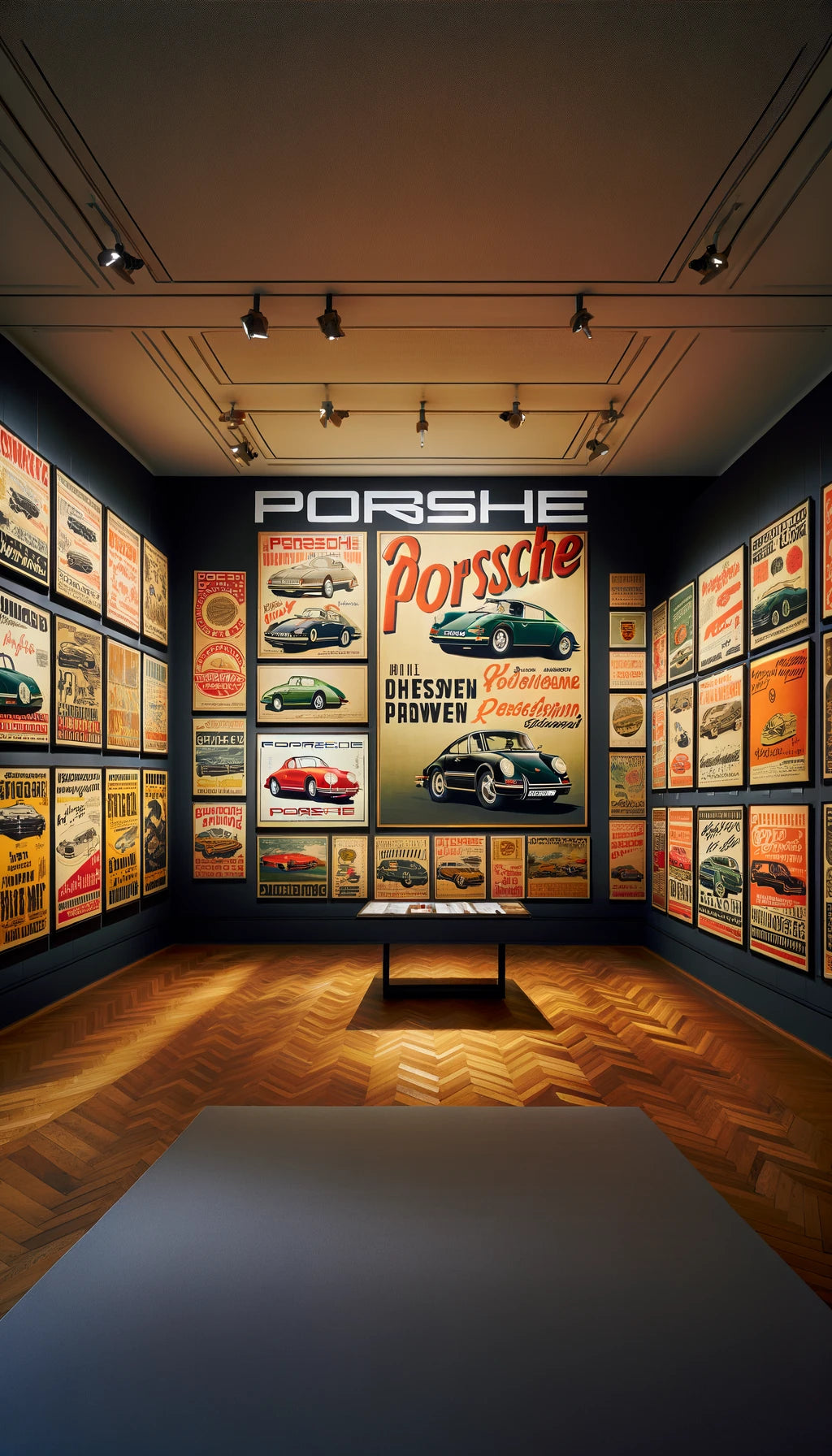
The Timeless Appeal of Porsche Advertising Posters
Share
Porsche advertising posters are more than just promotional materials; they are works of art that capture the essence of a brand synonymous with luxury, performance, and innovation. From the classic "Nobody's Perfect" Porsche ad to vintage Porsche 911 advertisement posters, these pieces not only celebrate the iconic cars but also reflect the design trends and cultural values of their times.
The Historical Significance of Porsche Ad Posters
The history of Porsche advertising posters dates back to the mid-20th century, a period when automobile advertising was flourishing. These posters were designed to evoke emotion, showcasing the sleek lines and powerful performance of Porsche vehicles. The "Nobody's Perfect" Porsche ad, for instance, famously highlighted the 911’s distinction by humorously pointing out its only flaw—that it had imperfections, making it human.
Design Elements of Vintage Porsche Posters
Vintage Porsche ad posters are renowned for their artistic quality and striking visuals. Key design elements often include:
- Bold Typography: Large, attention-grabbing fonts that convey the message quickly.
- High-Contrast Colors: Vibrant hues that stand out and draw the viewer's eye.
- Detailed Illustrations: Meticulously crafted images of the Porsche models, emphasizing their unique features.
- Minimalist Layouts: Clean and uncluttered designs that keep the focus on the car.
Popular Themes in Porsche Advertising
Several recurring themes can be observed in Porsche advertising posters:
- Performance and Speed: Highlighting the car's superior engineering and racing heritage.
- Luxury and Elegance: Emphasizing the brand's status as a symbol of opulence and sophistication.
- Innovation: Showcasing technological advancements and cutting-edge features of new models.
- Nostalgia: Capturing the timeless appeal of classic models, appealing to vintage car enthusiasts.
The Evolution of Porsche Advertising Posters
Over the decades, Porsche advertising posters have evolved to reflect the changing trends in design and marketing. In the 1960s and 1970s, posters often featured hand-drawn illustrations and bold, bright colors to catch the eye. The 1980s and 1990s saw a shift towards more photographic content, with posters emphasizing the sleek, modern lines of the cars against minimalist backdrops.
In recent years, there has been a resurgence of interest in vintage-style posters, with many modern advertisements paying homage to the classic designs of the past. This blend of old and new continues to captivate both long-time fans of the brand and new generations of enthusiasts.
Collecting Porsche Advertising Posters
For collectors, Porsche advertising posters represent a unique piece of automotive history. They offer a glimpse into the past and provide a tangible connection to the heritage of one of the world's most iconic car manufacturers. Collectors often seek out posters from specific eras or those featuring particular models, such as the Porsche 911, which has a storied place in the brand's history.
The Artistic Value of Porsche Posters
Beyond their advertising function, Porsche posters are appreciated for their artistic merit. The combination of graphic design, typography, and imagery creates visually stunning pieces that stand the test of time. Many of these posters are considered collectible art, often displayed in homes, offices, and galleries as a tribute to automotive excellence.
Conclusion
Porsche advertising posters are not only valuable collectibles but also serve as a testament to the brand's enduring legacy. Whether it's the iconic "Nobody's Perfect" campaign or the sleek portrayal of a Porsche 911, these posters continue to captivate and inspire.
By exploring the rich history and design of these posters, enthusiasts and collectors can appreciate the artistry and marketing prowess that have helped make Porsche a legendary name in the automotive world.
Internal Links:
- Explore our Porsche collection for more vintage treasures.
- Discover the allure of classic Porsche 911 advertisement posters.
This is the end of this generation.
